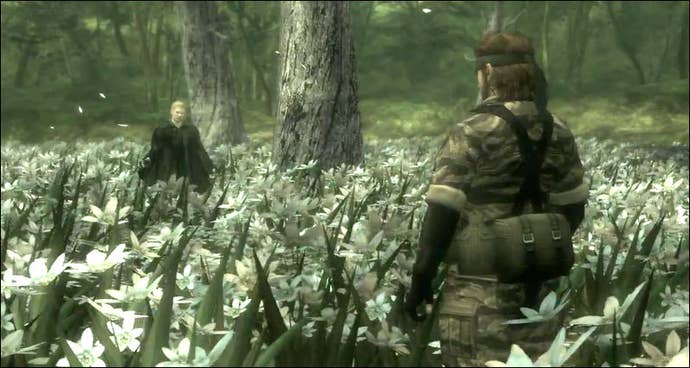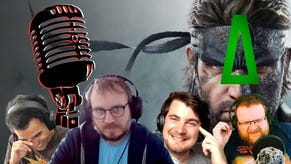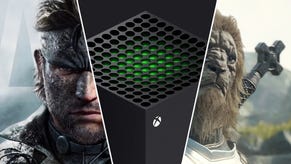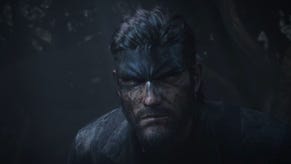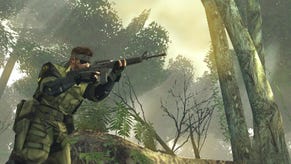The 15 Best Games Since 2000, Number 2: Metal Gear Solid 3: Snake Eater
Let's take a look at the high point of the Metal Gear franchise... Mr. President.
This article first appeared on USgamer, a partner publication of VG247. Some content, such as this article, has been migrated to VG247 for posterity after USgamer's closure - but it has not been edited or further vetted by the VG247 team.
We're nearing the end of our daily countdown of the 15 Best Games Since 2000. Want to read more? Check out the rest of the entries here.
"Someday you'll go through the rain! And someday you'll feed on a tree frog!" Cynthia Harrell croons in the opening credits of Metal Gear Solid 3: Snake Eater, and it's in those moments that it becomes apparent we're in for something different from either Metal Gear Solid or its somewhat controversial sequel. And in many ways, something much better.
There have been a number of entries in the franchise since, but Hideo Kojima has yet to top Metal Gear Solid 3, in many ways his magnum opus. Bob has gone so far as to argue that he will never top it, though there's been a lot of positive buzz around Phantom Pain. It was an ode to Ian Fleming and the James Bond films, but it was undeniably a video game, featuring among other things the ability to kill an antagonist before they were even properly introduced. And it brought to the fore Big Boss, unquestionably the franchise's most interesting character this side of The Boss, who is one of gaming's best characters period.
When Metal Gear Solid 3 was in development, though, there was no indication that any of this would be the case. After the ridiculous levels of hype surrounding the release of Metal Gear Solid 2, the franchise's reputation had taken in the minds of gamers and critics. It had its fans, but it was divisive at best, and the attempts to reconsider its impact were still some years away. As a consequence, Metal Gear Solid 3 mostly flew under the radar in the midst of a busy 2004 that included Halo 2, Half-Life 2, and World of WarCraft among others.
"It was an ode to Ian Fleming and the James Bond films, but it was undeniably a video game, featuring among other things the ability to kill an antagonist before they were even properly introduced."
Still, there were reasons to be optimistic about Metal Gear Solid 3 even at that early date. Its jungle setting contrasted mightily with the claustrophobic tanker of Metal Gear Solid 2, bringing to mind the original game's Outer Heaven complex. And in refocusing on the backstory of Big Boss, it was able to put aside some of the narrative baggage of the first two games and tell a more focused, self-contained story. All of this was to Metal Gear Solid 3's benefit, as was the shift in the timeline to the Cold War, which gave rise to a lighter tone that brought with it Harrell's famous theme song.
There were two major elements that ultimately set Metal Gear Solid 3 apart from the rest of the series, and they probably deserve their own article. The first element was the boss battles. Snake's fights against the The Cobra Unit and Volgin's number among the most memorable boss battles in gaming history. They ranged from memorable, over-the-top setpieces (the battle with the Shagohod) to the bizarre (The Pain and his bees), each one testing Snake in a new and interesting way.

Outside of the final boss battle, which I'll get to in a moment, the most memorable of them was against The End - the ancient sniper who can be eliminated in the midst of a story sequence. Much has been written about why this is one of the best boss battles ever, and everyone has their own story. My own experience involved searching desperately for the The End's telltale lens flare and getting surprised and thrown into jail, which isn't my finest moment. But at least I didn't resort to changing my PS2's clock so that he would die of old age. I would be remiss if I didn't also mention the sequence with The Sorrow, which serves as an explicit dig at all the killing that takes place in games. All I'll say is that my journey up the river of death was crowded with corpses, including some rather hapless helicopter pilots who were still on fire from when I shot them down. I was never very good at being stealthy.
Great as the battles were, though, the best was reserved for last, which brings me to the other element of Metal Gear Solid 3 that truly makes it an all-timer - The Boss. If you haven't played MGS 3 yet for some reason, I won't spoil the big reveal, but suffice it to say that she's a tragic character. Nicknamed "The Mother of Special Forces," she is cast as possibly the greatest soldier ever, and she certainly lives up to her reputation. She spends most of the game operating in the background, but her influence is felt throughout in her relationship with Snake and in her role as the game's ostensible antagonist.

I don't think I really need to talk about the trouble games have had with their depiction of women - I think that's self-evident even today. Metal Gear Solid itself has had its share of trouble in that regard. But The Boss still stands out today as a fully-developed character who avoids most of the stereotypical traps for women in media while serving as the story's animating force. As a consequence, she is considered one of gaming's most memorable characters.
Her most memorable moment also doubles as the best in a long line of excellent boss fights and the story's climax. Battling her former student in a field of white lilies, she does what any great final boss battle forces you to do - use all of the skills you've been taught to defeat her, most notably the rather in-depth close-quarters combat system, of which she is the inventor. Then, when she is finally defeated, it's up to you to pull the trigger and perform an emotional coup de grace. Pushing that button is one of the hardest things I've ever done in a game.
Metal Gear Solid 3 wound up rehabilitating the franchise's reputation among mainstream gamers, and was further improved by 2006's Subsistence - an updated version that introduced a controllable camera (thank god for that). Its standing sincee has only grown in the wake of the disappointing Metal Gear Solid 4 and the underrated Peace Walker, the latter which serves as a follow-up to Snake Eater. It is in many ways the platonic ideal of Metal Gear - a brilliantly designed action game that also critiques the medium is represents. Even today, there is really nothing like it.
While Metal Gear Solid 3 was under development, Hideo Kojima claimed it would be his last game in the series. As it turned out, that wasn't the case; but now that Kojima has been unceremoniously shown the door at Konami, it appears that his run with the series is indeed finished. The Phantom Pain may yet top it, but even if it does, Metal Gear Solid 3 will remain one of the highest points in the controversial but ultimately much-loved series. It deserves to be recognized as not just one of the fifteen best games since 2000, but as one of the best and most interesting games ever.
